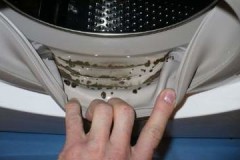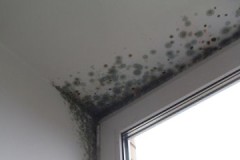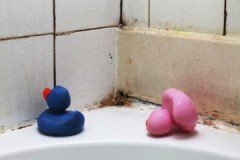Effective ways and techniques how to easily remove mold from the walls in your apartment
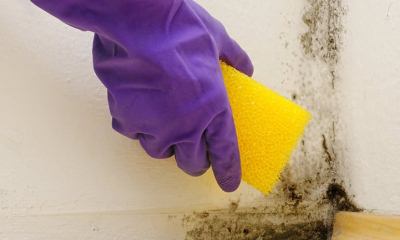 Fungal plaque on the walls of rooms is often not a serious concern.
Fungal plaque on the walls of rooms is often not a serious concern.
Meanwhile, mold spoils not only the aesthetic appearance of the home, but also causes a serious malfunction of the body.
In order to maintain repairs and your own health, it is important to know how to get rid of harmful fungus once and for all.
In this article we will tell you how to remove mold in an apartment or in a house with your own hands.
Content
Types of fungus
Poorly ventilated rooms with high humidity fall into the risk zone... The fungus can develop in any type of room, ranging from bathroom and ending with a living room. Mold affects not only walls, but also floors, ceiling, household items.
There are several types of mold:
-
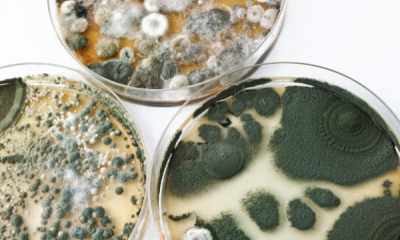 Green... It can often be seen on raw natural building materials.
Green... It can often be seen on raw natural building materials.The dark green fungus grows on the surface of liquids.
It is often found on the walls of the kitchen, where condensation forms due to poor ventilation and long cooking.
- White... This variety is almost not aggressive, but occasionally causes severe allergies. Most often, development begins in basements.
It affects the ground of indoor plants and, thanks to especially volatile spores, quickly passes to window frames, walls.
- Blue... The view can be observed on the walls made of wood (beams, logs, lining). Such mold is not harmful to health, but it is dangerous because it even destroys varnish and other protective coatings.
- Black... The most dangerous, toxic type of fungus. It can appear on any surface, including concrete, wallpaper.
How and how you can remove the fungus with your own hands will be discussed below.
Traditional methods for home use
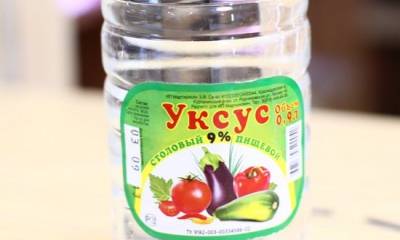 There are several effective home remedies for mold control.
There are several effective home remedies for mold control.
Most popular remedies:
- vinegar,
- peroxide,
- laundry soap,
But other folk methods are also used.
How to remove with table vinegar 9%?
Sometimes it is advised to dilute acetic acid with water in a ratio of 80 to 20, but for maximum effect it is better not to do this, using it in its pure form:
- The liquid is applied to the wall using a special spray gun.
- Then it is left for 3-4 hours.
- The remains are washed off with a wet cloth.
Hydrogen peroxide
Even impressive colonies of the fungus will not resist this liquid:
- The substance is used undiluted, applied with a spray bottle.
- Reapply after 20 minutes.
- Fix the result with tea tree essential oil to keep the effect for a long time.
Bura
Due to its insecticidal and herbicidal properties, the substance successfully destroys fungus on the walls and even upholstered furniture:
- It is required to prepare a solution of 1 tablespoon of borax with 3 liters of water.
- Then apply to the affected area with a sponge.
- After handling, wipe off excess liquid with a dry soft cloth.
- Borax does not need to be washed off, so it is able to protect against fungus for a long time after application.
Laundry soap
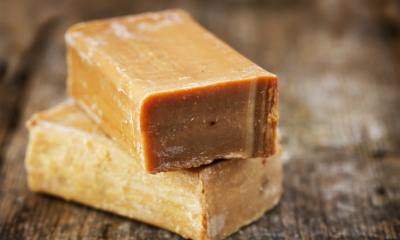 It is effective if the mold is just starting to grow. It has no effect against large colonies.
It is effective if the mold is just starting to grow. It has no effect against large colonies.
It is important to use real laundry soap with a fatty acid content of at least 72%:
- For application, the soap is grated and diluted with warm water.
- Then the walls are treated, washing off the composition after a few hours.
Ammonia
For hard, smooth surfaces (tiles, glass) ammonia is well suited:
- For processing, alcohol is mixed with warm (not hot) water in half.
- It is better to apply by analogy with vinegar (using a spray bottle).
- For the solution to work better, it should be left on the wall for at least 5 hours.
Sodium bicarbonate (soda)
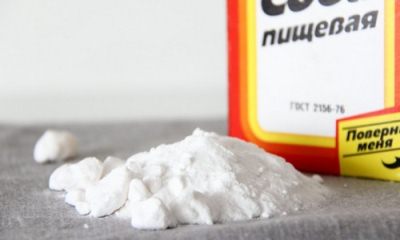 A harmless and at the same time effective substance in the fight against any mold.
A harmless and at the same time effective substance in the fight against any mold.
To make a solution for processing, you will need:
- a tablespoon of baking soda
- glass of water.
It is more convenient to apply the solution with a dish sponge, and it is necessary to rinse off no earlier than after 4 hours.
Bleach (white)
It is important that the composition contains active chlorine, it is he who has a detrimental effect on the fungus. The substance is diluted with water in a ratio of 2 to 5, and then applied to the mold.
Chlorine bleach is not suitable for colored surfaces because it destroys:
- upper layer,
- paint.
It is used only in ventilated areas, not forgetting about gloves.
How to get rid of mold on the wall with whiteness:
Copper sulfate
Copper sulfate remains the most effective remedy in the fight against aggressive black mold.
To remove the fungus you will need:
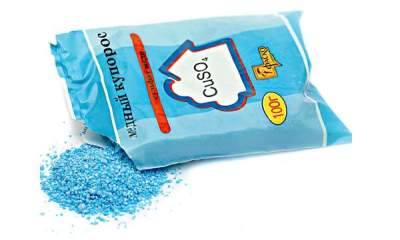 copper sulfate - 0.1 kg;
copper sulfate - 0.1 kg;- 1 liter of water at room temperature;
- large enamelled container.
You can add vinegar to enhance the effect.... All ingredients are diluted and then applied to the walls.
When using a solution of vitriol, personal protective equipment must not be neglected, you must wear:
- gloves,
- respirator,
- glasses and clothing made of thick fabric.
The composition must be washed off after 2-3 hours.
Poisoning by the substance is uncommon, but occurs when the treatment is carried out indoors, or if accidentally swallowed.
Top 3 specialized tools
Effective antiseptics that can kill fungus can be found on hardware store shelves.... They are presented:
- in spray cans,
- cans,
- spray bottles.
The use of any specialized anti-mold products on the walls is possible only with strict adherence to the instructions.
Olympus stop mold
A popular remedy permitted for indoor use... Pet owners do not have to worry - the composition is not dangerous.
The substance is used to treat surfaces from:
- bricks,
- wood,
- stone,
- walls covered with paint and plaster.
Average price: no more than 400 rubles for 5 liters... The tool is also presented in a 1 liter bottle worth just over 100 rubles.
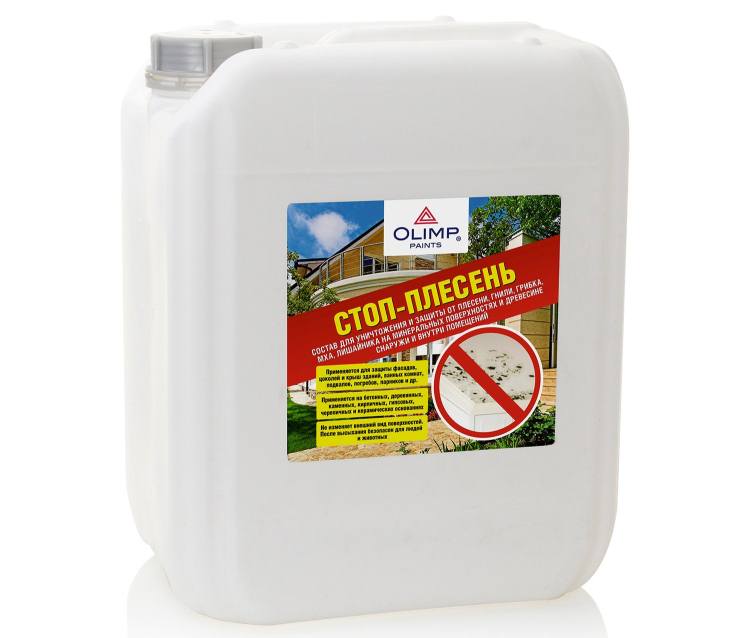
Dali
A universal antiseptic that is allowed to be used on any surfaces. It is consumed economically thanks to a bottle with a spray nozzle, it is perfectly absorbed.
Despite the fact that the product does not contain chlorine, it is recommended to use it only in well-ventilated areas due to its pungent odor. A canister with a volume of 6 liters costs 580 rubles, a bottle of 0.6 liters - 170 rubles.
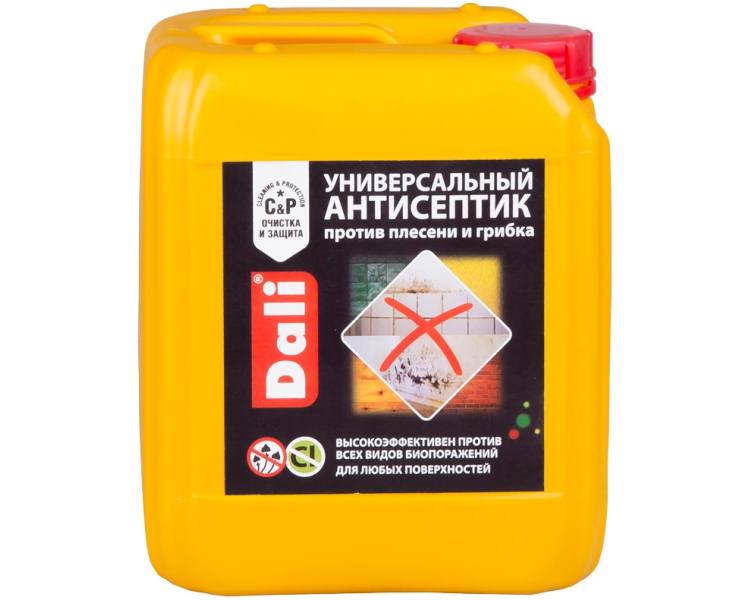
Alpa Fongifluid
Antiseptic, which is already diluted. It is effective for both indoor and outdoor treatments. Use in the calculation of 1 liter per 5 square meters. The price of a two-liter canister is about 600 r.
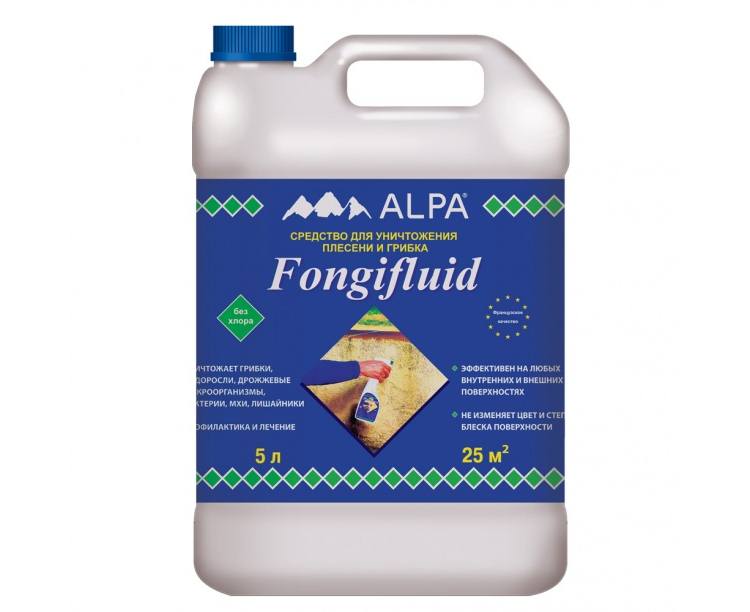
How to make repairs in the affected area?
Before proceeding with the repair in the room affected by the fungus, you should take out all the furniture, wear a respirator and gloves. Then:
- You need to clean the walls well. Old wallpaper is removed, moldy plaster is cleaned to concrete with a suitable tool.
- Residual dust is washed off.
- All walls of the room are treated with an antiseptic ("Biotol-Spray", "Mavix Bio", "Dali") according to the instructions, then washed and dried. It is better to leave the surface for a day so that there is no excess moisture left.
Painting is carried out in several stages: first put the first layer, which is allowed to dry completely. The second and subsequent layers are applied according to the same principle.
Prevention of the appearance
To prevent the fungus from multiplying, you need to ensure that a number of conditions are met:
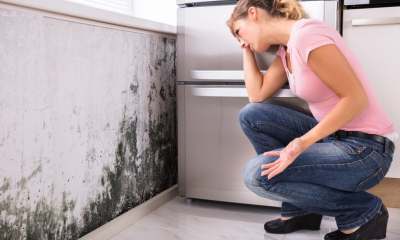 Humidity control. The most suitable range is 45 to 60%.
Humidity control. The most suitable range is 45 to 60%.- The kitchen needs a high-quality hood. With prolonged boiling of liquids, it is necessary to remove condensate from the walls in time, make sure that the humidity does not exceed the permissible norm.
- The bathroom must be dry. After water procedures, the bathroom door must be left open - this way the air will circulate better. An additionally installed electric heated towel rail can provide normal humidity and air temperature in the bathroom.
- Violation of the technology for installing plastic windows leads to condensation. It should be removed in time, otherwise a colony of mold will quickly grow, which will then move to the walls.
- Crevices on the outside of the house can lead to freezing of the walls. If this is the case, mold begins to multiply in characteristic places: corners and joints. Do not forget about the seams between the tiles and other gaps, periodically checking their condition.
- You should not dry your laundry right in the room, and even more so, put the dryer close to the wall. It is necessary to maintain the optimum air temperature - not less than 18, not more than 25 degrees.
Conclusion
Folk remedies against mold on the walls are quite effective, but specialized formulations show the best results.
Processing should be carried out as early as possible, and in case of extensive damage to the walls, it is better to seek help from professional workers of cleaning companies.

